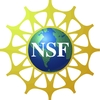

The Autschbach group does research in computational and theoretical chemistry. There are also extensive collaborations between us and experimental groups in the US and other countries who engage in synthesis and experimental characterizations of new compounds.
For relevant publications see our list of publications
Please also check out our Downloads page for useful software related to our
research
Magnetic Properties of Molecules (NMR, EPR, and others)
Theory and Computation of Optical Activity
Catalytically active systems: structure, bonding, properties
-element Chemistry and Spectroscopy (lanthanides, actinides)
Non-linear Molecular Response Properties
Molecular Vibrations
Molecular Dynamics
Relativistic Effects in Heavy Element Compounds
Current Projects:
Below is a list of topics that we’re working on, with support from the National
Science Foundation (NSF) and the US Department of Energy (DOE), focusing on
various aspects from the list of general topics above. Citations to selected
publications, mostly recent ones, are included for most topics, so you can pull up the
article abstracts and read more if you are interested. Most of the publications are
behind a paywall. Please email us if you would like to receive a PDF version of an
article.


Properties of molecules and extended systems: Electronic structure and
molecular dynamics (funded by NSF, Division of Chemistry). Current topics:
Electronic and Raman optical activity of transition metal complexes
and organic chromophores. [363] [347] [327]
Magnetic circular dichroism and magneto-chiral dichroism of
transition metal complexes. [346] [304]
Nuclear spin relaxation in NMR, calculated via classical or ab-initio
molecular dynamics. [340] [324] [333]
Radicals with energetic inversion of the singly occupied and the
highest occupied orbital (SOMO-HOMO inversion or SHI). [353]
[338]
Metal-ligand bonding in complexes with Platinum Group Metals (PGMs)
(funded by DOE, Critical Materials initiative, collaboration with Rob Schurko,
Florida State University). See Publications [439] [414] The overarching goal
of this project is to find out what makes PGEs so special. We hypothesize
that much of it has to do with unique metal-ligand bonding. Topics:
How much does solid-state NMR (SSNMR) tell us about donation
bonding in PGM complexes?
Theoretical analysis of NMR shielding, J-coupling, and electric field
gradient (EFG) tensors in terms of orbitals that represent individual
lone pairs, bonds, and core shells, in these complexes. This grant
on PGMs is new. However, we developed most the required NMR
tensor analysis tools in the past: [352] [235] [128] [101] [88] [76]
Actinide and lanthanide complexes: What do magnetic, electric, optical, and
spectroscopic properties reveal about 5f/4f shell covalency? (funded by DOE,
Heavy Element Chemistry program). Current topics:
Lanthanide complexes with interesting electronic structures (funded by DOE,
originally via the Quantum Information Science (QIS) initiative and
subsequently by the Heavy Element Chemistry program; collaboration with Eric
Schelter, University of Pennsylvania and Stefan Minasian, Berkeley Lab). The
project focuses on lanthanide complexes with multiconfigurational electronic
ground states, and how such quantum effects may be used in QIS. Recent
publications are [445] [440] [433] [424] [417] [392] [345] [344].
For this project, we implemented the calculation of Natural Transition Orbitals
for spin-orbit coupled wavefunctions in OpenMolcas [365], and an eXact
2-Component (X2C) module for calculating the magnetic hyperfine coupling.
[339]
Even when it is not stated so explicitly, many of these project involve collaborations with other researchers—often experimentalists—at UB, elsewhere in the US, and internationally.
Quantum Mechanics makes it possible to predict, theoretically, from first principles, the behavior of atoms, molecules and solids, i.e. the properties of the atomistic building blocks of everything around us. Solving the relevant equations (with some necessary approximations) requires serious number crunching. Recent advances in computer technology and algorithm development have allowed for the computation and theoretical prediction of the structures and properties, for example, of biomolecules, nano-materials, catalysts, and molecular materials. Such calculations are of great importance in science for at least three major reasons:
Calculations can be used to rationalize, after the fact, what has been
measured in a laboratory, to explain trends, or to decide which of several
possible explanations of an experimental outcome is correct. Sometimes
there is very little empirical knowledge available about what causes the
signs and trends of observed properties. Theory can be of great help to
generate this knowledge.
Calculations can be used to design molecules and materials with
improved properties, e.g. better performing catalysts, better performing
optical materials, or compounds with more precise chemical functions.
Theory-assisted or theory-driven design of molecules and materials can
enormously speed up the development cycle.
Calculations can be used to predict the behavior of yet unknown compounds and materials, or even entirely new chemical and physical phenomena. Exciting stuff! Hopefully someone eventually confirms the new effect, synthesizes the new molecule, and finds a way to make that hitherto unknown material.
Our research is primarily focused on predicting and understanding magnetic, optical and spectroscopic properties of molecules. This is very important: In spectroscopy, for example, scientists study molecules by placing them in static or oscillating electric or magnetic fields of varying frequency and detecting the molecule’s response to the presence of these fields. These spectroscopic methods are among the most powerful tools available to scientists to investigate molecular structure, bonding within molecules, interactions between molecules, their dynamic behavior, and how all this related to the desired functionality and chemistry. There are numerous spectroscopic methods available, depending on the choice of the fields, each one being governed by a different molecular response parameter that can be both measured and calculated. Many interesting properties of advanced materials are also described by such response parameters.
Performing calculations as described above requires quantum chemistry software. The Autschbach research group is active in developing new theoretical methods and accompanying software. In particular, we are active contributors to the open-source NWChem and OpenMolcas quantum chemistry packages, and to the Amsterdam Density Functional suite. ‘In-house’ developments are available on GitHub.
______________________
© 2011 – 2025 J. Autschbach. Any opinions, findings, and conclusions or recommendations expressed here are those of the author and do not necessarily reflect the views of the funding agencies mentioned on this page.